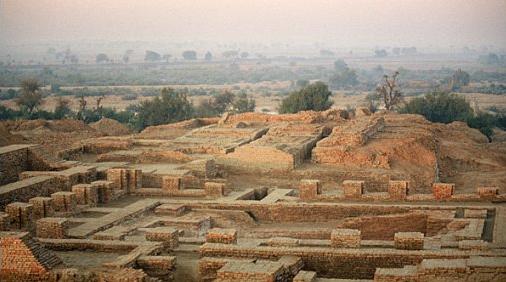
The short essay was published in Jain Journal in April 1972. To the reissued text some illustrations are added because this contributes to a better understanding of the expanation.
The Indus Valley Civilization and Ṛṣabha
The discovery of Indus Valley Civilization seems to have thrown a new light on the antiquity of Jainism. The time assigned by the scholars to this culture on the archaeological and other grounds is 3000 B.C.
It seems that the people of Indus Valley were highly civilized and cultured. Their culture, however, is ascribed to the Dravidians who, according to the Jaina tradition, were the devout followers of Śramana religion as preached by Lord Ṛṣabha, the first Tīrthaṅkara and contrary to Vedic beliefs. As they were the followers of Jainism, the Dravidians are styled as Vrātyas along with the Licchavis, Jnāṭrs, etc., by Manu.
Likewise the Asuras were also the followers of Jainism. The Brāhmaṇas say that the Asuras were progeny of Prajāpati (who was no other than Ṛṣabha) and they were hostile to Vedic Aryans (Ṛgveda 1,174.5). In Brahmanic Viṣṇu Purāṇa and Padma Purāṇa it has been clearly stated that Jainism was preached by a naked monk called Mahamoha among the Asuras, who lived on the banks of the Narmadā. This region is regarded as a place of pilgrimage by the Jainas even today. Sir John Marshall rightly notes that "a comparison of the Indus Valley and Vedic cultures shows incontestably that they were unrelated. The Vedic religion is normally un-iconic. At Mohenjodāro and Harappā iconism is everywhere apparent. In the houses of Mohenjodāro the firepit is conspicuously lacking."
It is a fact that the Jainas are the first Indian people who took to iconism in their religious worship and made the images of their Tīrthaṅkaras which resemble those found at Harappā and Mohenjodāro. The Harappā statuette is a male torso in nude form which resembles the torsos found at Lohanipur (Patna). Dr. K. P. Jayaswal assigned the latter to Mauryan and Suṅga periods respectively and declared that "it is the oldest Jaina image yet found in India, as it must belong at the latest to the Mauryan period." (JBORS, March 1947). In the face of similarities, the nude torso of Harappā seems to represent an image of a Jina, probably of Jina Ṛṣabha. T. N. Ramacandran, Jt. Director-General of Indian Archaeology after studying this question independently have declared that "we are perhaps recognising in Harappā statuette a fullfledged Jaina Tīrthaṅkara in the characteristic pose of physical abandon (kāyotsarga). The statuette under description is therefore a splendid representative specimen of this thought of Jainism at perhaps its very inception."
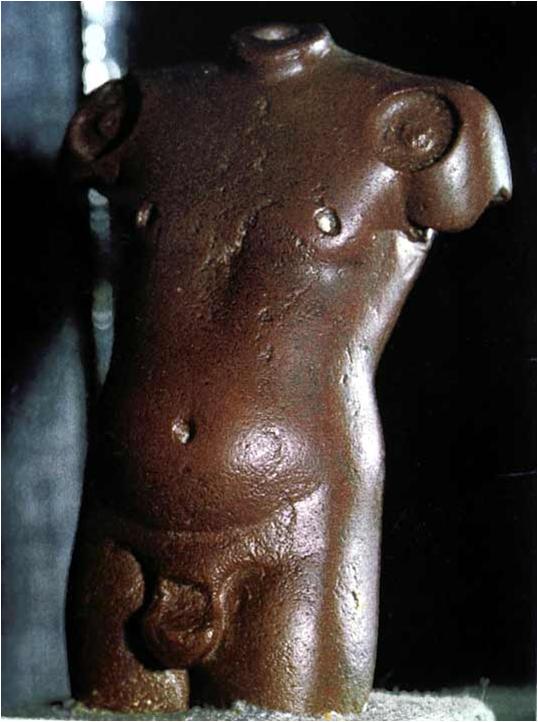
Male torso from Harappa
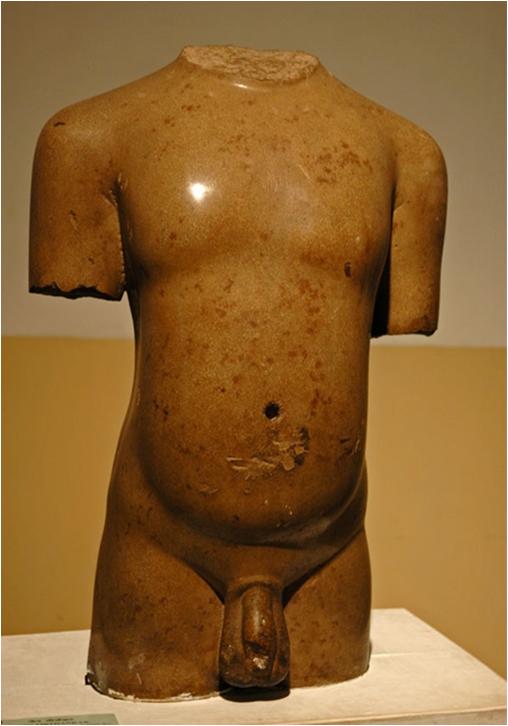
Male torso from Lohanipur (Patna)
Figures on the Mohenjodāro seals also depict the yogic pose and the idea of physical abandonment of the Jainas. These figures are represented as nude in standing kāyotsarga pose with a triśūla-like decoration on their head and the eye-sight fixed on the tip of the nose, which are the characteristics of an image of Jina.
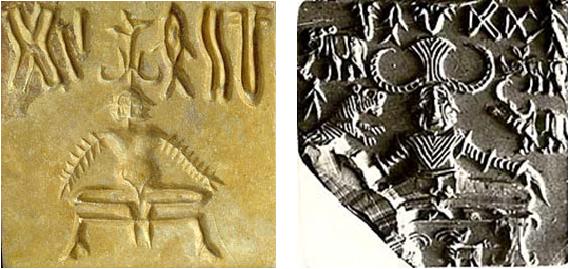
Seals from Mohenjodāro
Prof. R. P. Chanda discussed it in detail as follows: "Not only the seated deities engraved on some of the Indus seals are in yoga posture and bear witness to the prevalence of yoga in the Indus Valley in that remote age, the standing deities on the seals also show kāyotsarga posture of yoga. [...]The kāyotsarga posture is peculiarly Jaina. It is a posture not of sitting but standing. In the Ādipurāṇa (book XVIII) kāyotsarga posture is described in connection with the penances of Ṛṣabha or Bṛṣabha. A standing image of Jina Ṛṣabha in kāyotsarga posture on a slab showing four such images, assignable to the 2nd century A.D. is in the Curzon Museum of Archaeology, Mathura. Among the Egyptian sculptures of the time of the early dynasties there are standing statues with arms, hanging on two sides. But though these early Egyptian statues and the archaic Greek kouroi show nearly the same pose, they lack the feeling of abandon that characterises the standing figures on the Indus seals and images of Jinas in the kāyotsarga posture. The name Ṛṣabha means 'bull' and the bull is the emblem of Jina Ṛṣabha."
Therefore it is possible that the figures of the Yogi with bull on the Indus seals represent the Mahayogi Ṛṣabha. The images of Ṛṣabha with triśūla-likedecoration on the head in a developed artistic shape are also found at a later period. Thus the figures on the Mohenjodāro seals vouchsafe the prevalence of the religion and worship of Jina Ṛṣabha at the early period on the western coast of the country.
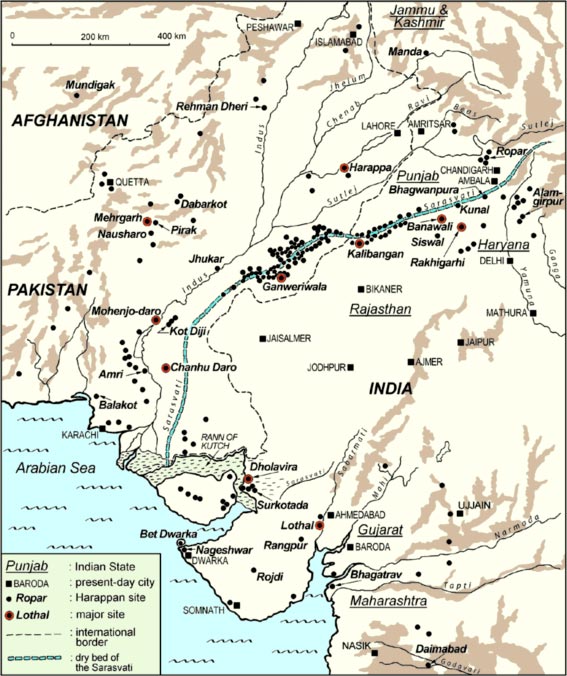
 V. G. Nair
V. G. Nair